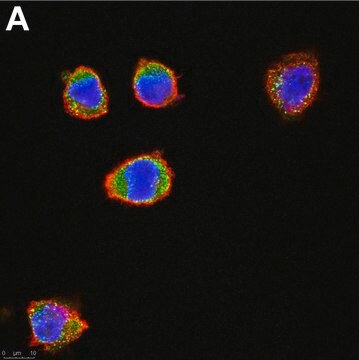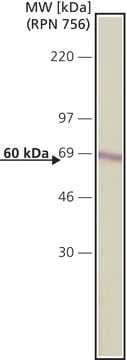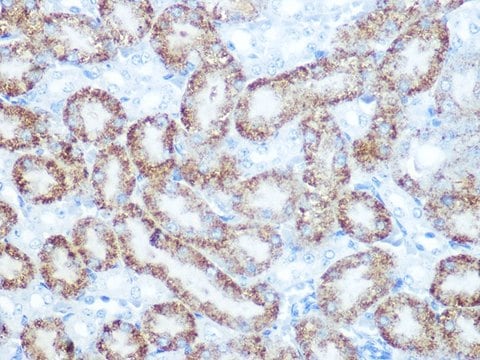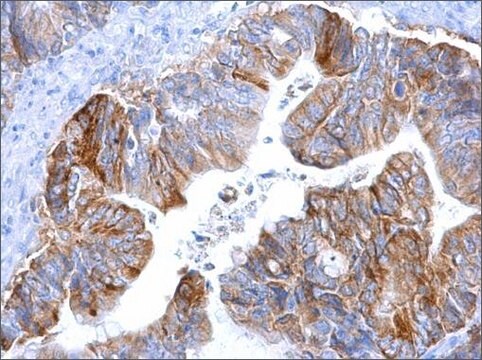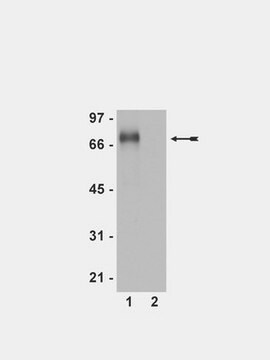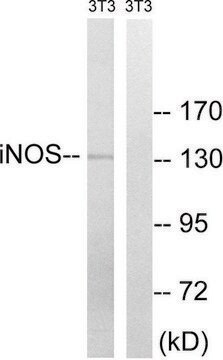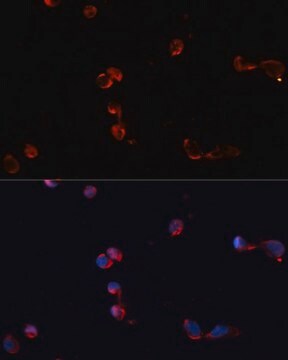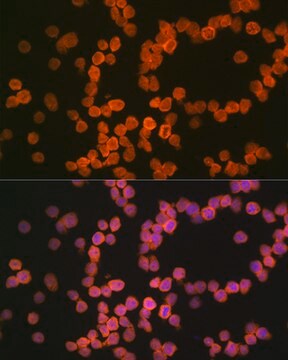SAB4503383
Anti-Catalase antibody produced in rabbit
affinity isolated antibody
Synonym(s):
CAT, CATA
Sign Into View Organizational & Contract Pricing
Select a Size
All Photos(1)
Select a Size
Change View
About This Item
Recommended Products
biological source
rabbit
Quality Level
conjugate
unconjugated
antibody form
affinity isolated antibody
antibody product type
primary antibodies
clone
polyclonal
form
buffered aqueous solution
mol wt
antigen 59 kDa
species reactivity
rat, mouse, human
concentration
~1 mg/mL
General description
Anti-Catalase Antibody detects endogenous levels of total Catalase protein.
Anti-Catalase Antibody detects endogenous levels of total Catalase protein. Catalase is an important antioxidant enzyme. It is located on human chromosome 11p13. Catalase is a tetrameric heme protein. It is abundantly present in aerobic organisms and most of the mammalian tissues.
Immunogen
The antiserum was produced against synthesized peptide derived from human Catalase.
Immunogen Range: 361-410
Immunogen Range: 361-410
Application
Anti-Catalase antibody has been used in immunohistochemical studies, immunoelectron microscopic studies and immunofluorescence studies.
Biochem/physiol Actions
Catalase helps in the clearance of reactive oxygen species. Mutation in catalase (CAT) gene result in the progress of essential hypertension (EH). It helps to convert hydrogen peroxide to water and molecular oxygen.
Features and Benefits
Evaluate our antibodies with complete peace of mind. If the antibody does not perform in your application, we will issue a full credit or replacement antibody. Learn more.
Physical form
Rabbit IgG in phosphate buffered saline (without Mg2+ and Ca2+), pH 7.4, 150mM NaCl, 0.02% sodium azide and 50% glycerol.
Disclaimer
Unless otherwise stated in our catalog or other company documentation accompanying the product(s), our products are intended for research use only and are not to be used for any other purpose, which includes but is not limited to, unauthorized commercial uses, in vitro diagnostic uses, ex vivo or in vivo therapeutic uses or any type of consumption or application to humans or animals.
Not finding the right product?
Try our Product Selector Tool.
Storage Class
10 - Combustible liquids
wgk_germany
nwg
flash_point_f
Not applicable
flash_point_c
Not applicable
Choose from one of the most recent versions:
Certificates of Analysis (COA)
Lot/Batch Number
Don't see the Right Version?
If you require a particular version, you can look up a specific certificate by the Lot or Batch number.
Already Own This Product?
Find documentation for the products that you have recently purchased in the Document Library.
Free Radicals in Cell Biology
Vidosava B
International Review of Cytology, 237, 57-89 (2004)
Influence of A-21T and C-262T genetic polymorphisms at the promoter region of the catalase (CAT) on gene expression.
Khyber S, et al.
Environmental Health and Preventive Medicine, 21(5), 382?386-382?386 (2016)
Frequent Loss of Heterozygosity on Chromosomes 3p and 17p without VHL or p53 Mutations Suggests Involvement of Unidentified Tumor Suppressor Genes in Follicular Thyroid Carcinoma.
Stefan K G G, et al.
The Journal of Clinical Endocrinology and Metabolism, 82(11), 3684?3691-3684?3691 (1997)
Corentin Affortit et al.
Cellular and molecular life sciences : CMLS, 81(1), 80-80 (2024-02-09)
Dominant optic atrophy (DOA) is one of the most prevalent forms of hereditary optic neuropathies and is mainly caused by heterozygous variants in OPA1, encoding a mitochondrial dynamin-related large GTPase. The clinical spectrum of DOA has been extended to a
The effect of glucagon-like peptide-1 in the management of diabetes mellitus: cellular and molecular mechanisms.
Lotfy M, et al.
Cell and Tissue Research, 358(2), 343-358 (2014)
Our team of scientists has experience in all areas of research including Life Science, Material Science, Chemical Synthesis, Chromatography, Analytical and many others.
Contact Technical Service